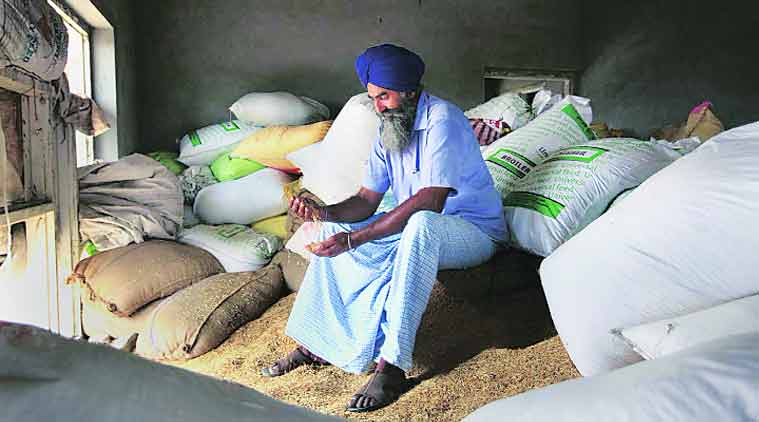On the field, tracking the farmers as they wait for rain
From pulses in Karnataka to soyabean in Madhya Pradesh, basmati paddy in Haryana to groundnuts in Gujarat, hedging their bets.
By: Sreenivas Janyala, By: Express News Service | Updated: June 25, 2015 2:45 am, Source
Dinkar Kulkarni isn’t aware the Narendra Modi government has raised the minimum support price (MSP) for toor (arhar or pigeon pea) this year by Rs 275 to Rs 4,675 per quintal: “No one has told me about it yet.”
Not that it makes much of a difference to this 30-acre farmer from Siddeshwar village in Bidar’s Bhalki taluka. When open market prices of toor are ruling at Rs 7,000 per quintal as against the Rs 4,000 at this time last year, “how does fixing MSP at Rs 4,675 benefit us, more so when the government hardly procures any pulses?” he asks.
MSP matters only when there is a market glut and toor prices fall, as they did in 2013-14, and the government did not buy. But in 2014-15, most farmers — including Kulkarni — sold their crop at Rs 5,000-6,000 per quintal.
The current year promises a similar story. While prices of most crops — cotton, sugarcane, rubber, wheat, corn and basmati rice — have crashed amidst a general slump in global commodity markets, pulses growers have reasons to be optimistic. They are eager to plant, with or without MSP.
Bidar, along with Gulbarga, Bijapur and Yadgir districts of north-east Karnataka, is India’s main production bowl for toor, the largest kharif pulse crop sown during June-July and harvested in December-January.
Last year, Kulkarni planted 10 acres of toor and soyabean, another 10 of maize and vegetables, and pomegranate and berry trees on the remaining 10. This year, he has sown toor on 15 acres.
“You cannot take chances with a six-month crop. If for some reason prices fall or yields aren’t good, you need some other crop to compensate, which is why I have also planted ginger and vegetables this time. Also, if toor was grown on a particular plot last year, it cannot be repeated this year. That plot would have to be planted with some other crop”, he says, explaining why acreages cannot be increased beyond a point.
Bidar district receives about 700 mm of rain for the four-month monsoon season from June, less than the national average of 890 mm. Farmers like Kulkarni have invested in borewells to tap groundwater 200 feet below, and in drip irrigation systems.
Kulkarni has planted the new hybrid ICPH-2740 on his entire 15 acres of toor. The hybrid, developed by the International Crops Research Institute for the Semi-Arid Tropics (ICRISAT) near Hyderabad, was tested out last year by Yesajirao Patil of Ahmadabad village in the same Bhalki taluka, who grew it on 5 acres following ICRISAT’s recommended package of practices.
“He got 10 quintals per acre from it, almost double the 4-6 quintals yields from existing varieties such as BSMR-736 and Asha. Everybody is, therefore, keen to plant the hybrid,” Kulkarni says.
Sangram Kandugule has planted ICPH-2740 in five of his eight acres in Ahmadabad, and hopes to harvest up to 13 quintals per acre. He has also decided to spend Rs 3 lakh on a borewell on his field.
“It is a good investment, as toor prices are good, and I expect to recover the money quickly,” he says.
Yesajirao Patil, who farms 12 acres, too was ignorant about the government’s latest MSP decision when The Indian Express met him over the weekend. But Rs 4,675 per quintal, he believes, isn’t adequate to cover the price as well as weather risks involved in growing a 180-day crop.
“They should have increased by at least Rs 500 (taking the MSP closer to Rs 5,000 per quintal),” he says. “If the government wants us to grow more pulses, we should at least be protected against excessive market price fluctuations that make cultivation a real gamble today. The MSP should be fixed so that farmers are guaranteed a decent profit whenever they are forced to sell at that rate.”

This year, farmers are actually being discouraged to plant basmati: “The arhatiyas (traders) have told us we are in no position to buy and you are growing at your own risk.” (Express Photo by: Oinam Anand)
